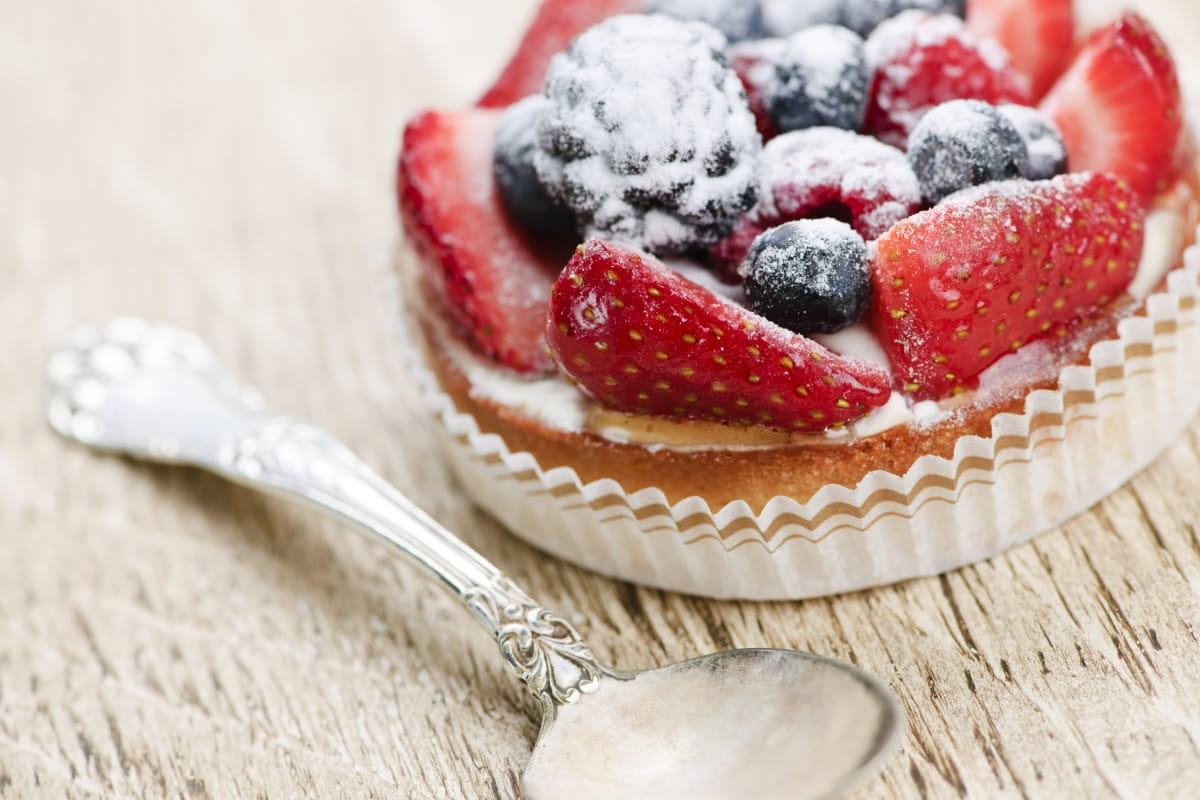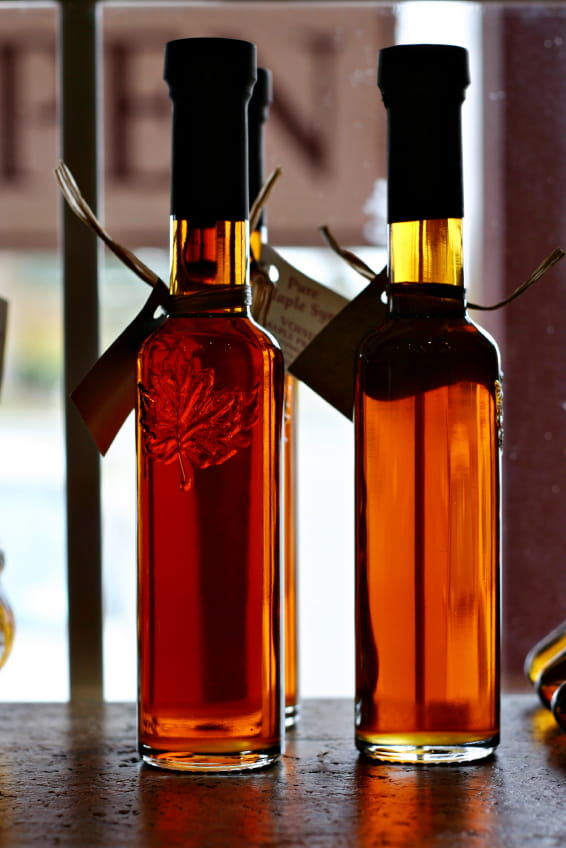A Closer Look at Sweeteners
December 8, 2014
Download the full report here!
Today's consumers are demanding products with less sugar - but all of the taste - and are looking to purchase and consume more natural, simple products. These trends, along with growing concerns of rising obesity rates (especially among children), have put a spotlight on spotlight on sweeteners used in food and drink applications.
There are several different types of sweeteners to choose from when developing new products, and now, as more inventive multi-sweetener blends are being used in food and drink applications, it’s not unusual to see three or four different sweeteners in a single product. This added complexity means it’s now more important than ever for product developers to understand the options for sweeteners available for their products and the taste and flavor impact of those choices. It can be a sticky situation for consumers and developers alike to sort through all of this variety.
FONA International Beverage Scientist, Trina Murray understands how difficult selecting and flavoring with sweeteners can be. She works with a variety of sweeteners as she helps develop flavor solutions for beverage customers. We asked her to walk us through the basics of several different types of sweeteners and the unique flavoring characteristics of each. Here’s what she had to say:
Sugar/Sucrose:
This traditional sweetener system remains the gold standard for sweetness today. It is applicable across a wide range of applications, providing a broad sweetness intensity curve and full mouthfeel.
Flavoring suggestion: Excellent with all types of flavors.
High Fructose Corn Syrup (HFCS):
HFCS is created through enzymatic processing of corn syrup to increase the fructose content, making it sweeter. The result is a product similar in sweetness to sucrose. HFCS is very stable, but lacks some of the body/mouthfeel that sucrose provides. In the 1970’s, HFCS largely replaced sucrose as the sweetener for carbonated soft drinks because of its cost effectiveness, but recent consumer interest in natural has led some soft drink manufacturers to revert back to sugar. This spring, for example, Pepsi announced that its limited-edition Pepsi Throwback soda sweetened with cane sugar instead of HFCS would become a permanent offering.
Flavoring suggestion: Clean sweetness profile makes it applicable across a broad range of flavors.

Agave Syrup & Brown Syrup:
With the rising trend of natural products, nutritive sweeteners such as agave and brown rice syrups, have gained popularity. The biggest advantage for these two syrups is their low glycemic indices do not produce the same insulin spike associated with sucrose. These sweeteners are not without their disadvantages, however. Strong flavor characteristics, cost challenges, and overall level of sweetness delivered may limit their feasibility.
Flavoring suggestion: Because of agave's grassy and slightly bitter flavor profile, choose flavors with less green notes. For example, a ripe strawberry flavor rather than a green strawberry flavor.
High Intensity Sweeteners (HIS):
Consumers want the taste of sugar without the calories, and this is a difficult challenge for application scientists, as most HIS do not deliver the whole package of sweetness, time intensity, and mouthfeel.
Flavor suggestion: Works well with fruit flavors, as it enhances the flavor profile, increasing mouthfeel.
Acesulfame Potassium Salt (ACE K):
Approximately 200 times sweeter than sugar, Ace K has an upfront sweetness which dissipates fairly quickly. Because of this attribute, it is most commonly used in combination with other sweeteners, providing the upfront sweetness profile that is lacking in most other HIS. Ace K can withstand high temperatures, but delivers a metallic off-taste in some applications.
Flavor suggestion: Works well with fruit flavors, as it enhances the flavor profile, increasing mouthfeel.
Aspartame:
Aspartame is also about 200 times sweeter than sugar. It breaks down in heat, so it’s not well-suited for applications that are exposed to high levels of heat over a long period of time. Products containing aspartame carry warnings on the label because some people can’t digest the amino acid phenylalanine contained in this high intensity sweetener.
Flavor suggestion: Best-suited for fruit and cola flavors because aspartame has a relatively clean profile.
Sucralose:
Sucralose is a chlorinated sugar (sugar is altered so three chlorine atoms replace three hydroxyl groups) and is about 600 times sweeter than sucrose. It is pH and heat stable, allowing it to be used in baked and fried foods, in addition to beverages and other products. Sucralose has a delayed sweetness onset, which lingers significantly longer than other HIS. This makes it compatible with functional beverages which often have lingering bitter off-notes. The lasting sweetness of sucralose helps mask these characteristics.
Flavor suggestion: Citrus type flavors work well because the acidity helps reduce the powdery sweet linger.

Stevia:
Extracted from the leaves of the S. rebiana plant, stevia is the first natural high-intensity sweetener. It is approximately 250-300 times sweeter than sucrose. Stevia extracts have a lingering licorice or metallic flavor associated with them. This is challenging from an application perspective, as these off-notes can compete with the flavor system that is being applied. Masking flavors have been developed to help cover these off-notes.
Flavor suggestion: The licorice/ anise note of stevia is less aparent when used in flavors like cola, rootbeer and ginger.
Saccharin:
Three hundred times sweeter than sugar, and able to withstand heat, it is the largest volume, lowest cost HIS used in the world. In 1977 there was a cancer scare with saccharin, but in 2000 National Institutes of Health said it should be removed from list of carcinogens. A bit of a stigma still remains, however, so saccharin is not very widely used in the U.S. except as a packet sweetener.
To learn more about sweeteners, download the full report here!
________________________________________________________________________________________
FONA CAN HELP!
Let FONA’s market insight and research experts translate these trends into product category ideas for your brand. They can help you with concept and flavor pipeline development, ideation, consumer studies and white space analysis to pinpoint opportunities in the market. Our flavor and product development experts are also at your service to help meet the labeling and flavor profile needs for your products to capitalize on this consumer trend. We understand how to mesh the complexities of flavor with your brand development, technical requirements and regulatory needs to deliver a complete taste solution. From concept to manufacturing, we’re here every step of the way. Contact our Sales Service Department at 630.578.8600 to request a flavor sample or visit www.mccormickfona.com.



